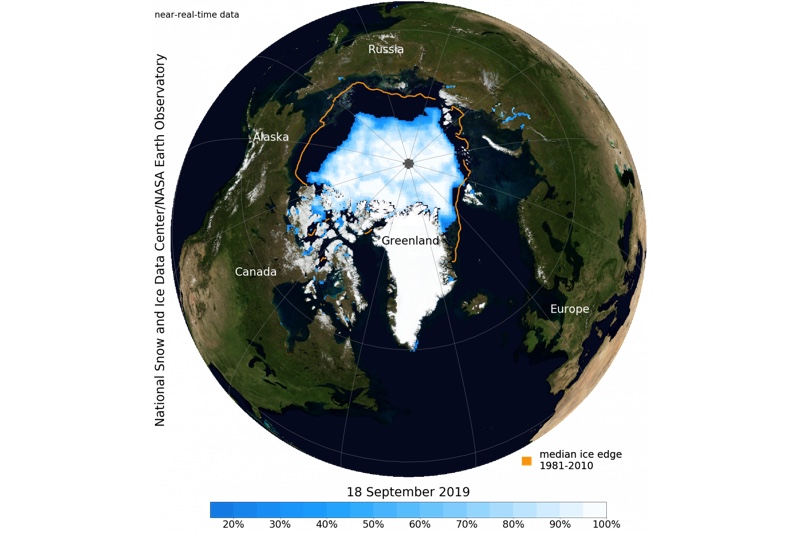Yesterday, the National Snow & Ice Data Center in Boulder, Colorado announced its yearly findings when it comes to the health of the sea ice found in the Arctic Ocean. This part of the world is often seen as a canary in the coal mine when it comes to interpreting the impact of climate change and in recent years it has provided us with a glimpse of how a warming planet is impacting the polar regions. As you can probably guess, the news wasn’t good as the extent of the Arctic ice is at its second lowest total in the past 41 years, which is when satellites began being used to track its coverage.
According to the report, the Arctic sea ice extent reached its minimum coverage on September 18 and is now starting to reform. Over the course of the winter, that ice will rebuild itself, stretching further and further south at the cold conditions freeze the Arctic Ocean. The problem is, this year that minimum extent consisted of just 4.15 million sq. km (1.6 million sq. miles), which means when the ice does reform, it’ll likely continue to cover less and less of the ocean and won’t reach as southerly points as it once did.
To put this into perspective, that is 2 million square kilometers (811,000 sq. miles) below the average amount of sea ice extent. The loss of that ice could have dire consequences for the polar ice caps, which will cause oceans to rise around the world as they continue to melt. But, the loss of the ice can also have an impact on not just climate, but weather too. The jet stream is likely to shift, winds and weather patterns could intensify, and become less predictable, while the amount of precipitation that a region gets could rise or lower dramatically as well. In other words, the loss of the polar ice could have broad and sweeping consequences for the planet as the ice continues to retreat.
The report says that its current number is second to just 2012 for the smallest extent ever recorded. But, it also warns that this is only a preliminary number and that due to shifting winds, it could end up being even less than the current estimate. Satellite imagery allows the NSIDC to monitor the changing conditions on a daily basis, which is about as rapidly as things change throughout the summer months. Since 1978, satellite tech has been used to closely watch the shift ice and while four decades is hardly any time at all in a geological sense, the dramatic reduction of the extent over the past decade or so is alarming.
I expect we’ll only continue to see these kinds of reports moving forward as the science behind climate change seems to be pretty clear. At this point, it’s not even worth debating whether or not man is behind this. Natural or not, the changes are occurring and we probably should try to do something about it before its too late.
- Gear Review: The Xero Scrambler Mid is an Ultralight Hiking Shoe for Spring - March 1, 2023
- Gear Review: Yeti Roadie 48 Wheeled Cooler - August 18, 2022
- Kristin Harila Continues Pursuit of 8000-Meter Speed Record - August 16, 2022

We shouldn’t probably do something but ACTUALLY do something!